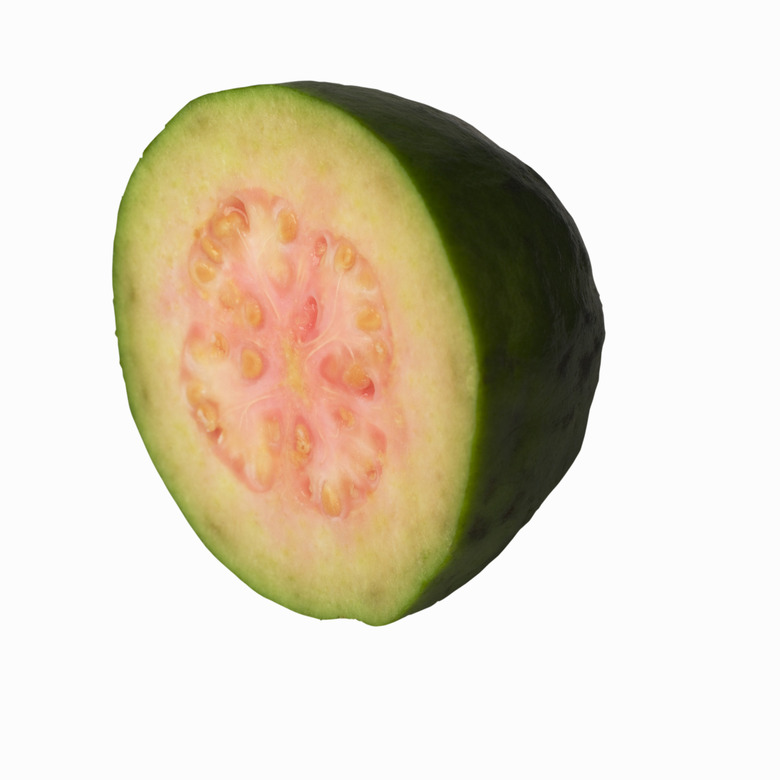Guava Varieties
Guavas (Psidium spp.) come in a variety of tropical flavors and are a fun fruit for kids to harvest and for the family to enjoy. They are generally grown as small evergreen trees, but can also be trained into a hedge. In Florida, the Gulf Coast region and the milder parts of California, they are a useful option for edible landscapes as one of the easiest exotic fruits to grow. There are a number of distinct guava varieties with different flavors and landscape preferences. Depending on the variety, they can be grown in U.S. Department of Agriculture plant hardiness zones 8 through 11.
Common Guava
Step 1
The common, or apple, guava (Psidium guajava) has the largest fruits of all and is the type you'll generally see at the supermarket. The fruit can weigh up to 1 pound and is bright yellow when ripe. Young apple guava trees do not survive temperatures below 27 degrees Fahrenheit, although mature trees may regrow from their roots after a hard freeze. "Homestead" is a popular pink-fleshed variety from Florida that is very sweet. "Ruby," a red-flesh variety, is known for its exquisite flavor and tropical aroma. Apple guavas have a firm texture, so they work well to slice and include on fruit platters.
- come in a variety of tropical flavors and are a fun fruit for kids to harvest and for the family to enjoy.
- Apple guavas have a firm texture, so they work well to slice and include on fruit platters.
Strawberry Guava
Step 1
Strawberry guavas (Psidium cattleianum) typically have smaller leaves and fruits than the common guava and a more shrub-like form. The fruit is dark red when ripe and about 1 1/2 inches in diameter. They are slightly more hardy than the common guava, surviving temperatures to 23 degrees with minimal damage. "Lemon" guava is the most common variety, known for its yellow skin and excellent flavor. Strawberry guavas are easy to eat by hand, making a fun snack for the kids to harvest and eat straight from the tree.
Pineapple Guava
Step 1
Pineapple guavas (Feijoa sellowiana) are more cold hardy than the other varieties, tolerating temperatures to 15 degrees or lower. They have an altogether different flavor, as their name suggests, and are a popular landscape plant in California. Unlike, the other species, pineapple guavas require a second plant for cross-pollination. "Natchez" has particularly large fruits — up to 3 or 4 inches long. The large red and white flowers of the pineapple guava are very showy and also edible, making an attractive garnish for salads and desserts.
- Strawberry guavas (Psidium cattleianum) typically have smaller leaves and fruits than the common guava and a more shrub-like form.
- Pineapple guavas (Feijoa sellowiana) are more cold hardy than the other varieties, tolerating temperatures to 15 degrees or lower.
Gauva in the Landscape
Step 1
Guavas are not picky at all about soil, but require weekly watering to get established for the first couple of years. After that, they are usually very tough and reliable plants, requiring little attention. Guavas are truly low maintenance fruit trees — but gardeners beware, guavas are too easy to grow in some places, and common and strawberry guavas can be highly invasive in Hawaii and parts of Florida. Consult with your local cooperative extension service or a reputable nursery to be sure they are safe to plant in your area.
